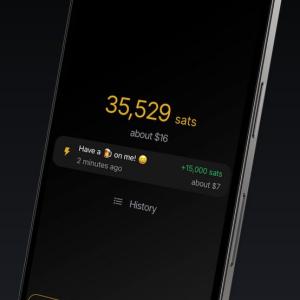The Lightning Network is a bitcoin payment technology that runs on top of a blockchain. It is intended to allow for quick, low-cost, and private Bitcoin transactions between participating nodes. The Lightning Network’s basic premise is to allow users to create off-chain payment channels between any two parties on the network. These channels can be used to facilitate an unlimited number of transactions without requiring each one to be recorded on the blockchain. This allows for substantially faster transaction speeds, lower fees, and better privacy when compared to bitcoin on-chain transactions.
The Lightning Network was first proposed in a white paper published in 2015 by Joseph Poon and Thaddeus Dryja. The paper, titled “The Bitcoin Lightning Network: Scalable Off-Chain Instant Payments,” described a new way to scale the Bitcoin network by allowing for off-chain transactions.
The Lightning Network is considered by many to be an important development for the future of bitcoin. One of the main challenges facing bitcoin is the issue of scalability, which refers to the ability of the network to handle many transactions efficiently. The bitcoin blockchain can handle a maximum of seven transactions per second, while the Lightning Network is capable of processing 1,000,000 transactions per second. The Lightning Network has the potential to significantly improve the scalability of bitcoin networks by allowing for off-chain transactions, which can be processed much faster than on-chain transactions and do not congest the blockchain.
How the Lightning Network works
Two or more participants on the network open a payment channel by sending a small amount of funds to a special address on the blockchain. This creates a “smart contract” that allows the participants to transact with each other without the need for further blockchain confirmations. The participants can then send unlimited transactions back and forth to each other over the payment channel, as long as the channel is open. These transactions are not recorded on the blockchain, and are only between the participants of the channel. When the participants are finished conducting their transactions, they can close the payment channel by broadcasting the final balances to the blockchain. This will update the balance of the participants on the blockchain and close the channel.
Benefits of the Lightning Network
One of the main benefits of the Lightning Network is that it allows for faster and cheaper transactions compared to on-chain transactions. Because the transactions are not broadcast to the entire network, they are confirmed more quickly and do not incur the same fees as on-chain transactions. This makes the Lightning Network particularly useful for small, frequent transactions, such as micropayments. Additionally, the Lightning Network allows for greater privacy and anonymity compared to on-chain transactions, as the details of the transactions are not recorded on the blockchain. This can be attractive to users who value privacy and want to keep their transactions private.
Although the Lightning Network is still under development and not generally available, it has the potential to substantially improve the scalability and usability of bitcoin networks.
Read also: Liquid Networks vs Lightning Network
Lightning Network Adoption
Adoption of the Lightning Network has been growing steadily in recent years. The number of Lightning nodes has increased from just a few hundred in 2018 to over 16,000 in mid 2023. The total capacity of the Lightning Network has also increased significantly, from just a few million dollars in 2018 to over $500 million as of March 2023.
There are a number of factors that are driving adoption of the Lightning Network. One factor is the increasing cost of using the Bitcoin network. As the price of Bitcoin has increased, so too have the fees required to broadcast transactions to the network. The Lightning Network offers a way to avoid these fees, making it more affordable to use Bitcoin for everyday payments.
Another factor driving adoption of the Lightning Network is the increasing number of wallets, apps and services that support it (see below). In 2018, there were only a handful of wallets and services that supported the Lightning Network. Today, there are dozens of options available, making it easy for users to get started with the Lightning Network. For example, in March 2023, Xapo Bank embraced the Lightning Network, enabling its customers to experience lightning-fast bitcoin payments with significantly reduced transaction fees.
Lightning Network fees
In the Lightning Network, fees are typically much lower because transactions occur off-chain, meaning they are not directly recorded on the Bitcoin blockchain. The fees in the Lightning Network are generally determined by the participants of the network, and they can vary depending on factors such as the transaction size, network congestion, and the fee policies set by the nodes. Nodes may set fees to incentivize faster processing or to prioritize certain transactions. It’s important to note that while Lightning Network fees are typically lower, they are not entirely free. There are minimal fees associated with opening and closing payment channels, as well as routing fees for using channels maintained by other participants.
Lightning Network apps
There are a number of different applications and services that use or support the Lightning Network, including wallets, payment processors, and games. Here are a few examples:
- Lightning wallets are bitcoin wallets specifically designed for the Lightning Network, allowing users to send and receive payments, manage channels, and more. Lightning wallets include Muun and BlueWallet.
- Strike is an app to convert your paycheck to bitcoin, buy and sell bitcoin, pay for goods and services online, tip content creators, and send money to family and friends via the Lightning Network.
- Fold is a mobile shopping app that allows you to earn bitcoin back on their purchases at major US retailers such as Amazon, Starbucks, Whole Foods, and Uber, Best Buy, Target, Dunkin’ Donuts, and Chipotle.
- Fountain is apodcast app that enables you to earn sats by listening to podcasts.
- Tweetoshi is an app that pays users with bitcoin for using Twitter and allows users to send bitcoin to one another on Lightning Network.
- Alby is a web and browser-based open source Bitcoin Lightning app. The program allows you to obtain a simple Lightning address to pay or receive bitcoin over the Lightning Network via your browser.
- Lightning Pizza is a service that allows customers in the United States to order Domino’s Pizza using the Lightning Network.
- OpenNode is a payment processor that allows merchants to easily accept bitcoin using Lightning Network on their website.
Lightning Network wallets
Filter by :
These are just a few examples of the many applications and services that support the Lightning Network. As the network continues to grow and evolve, it is likely that more and more apps and services will be developed to take advantage of its capabilities.






































